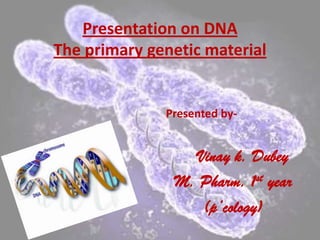This document provides an overview of DNA and genetics. It discusses how DNA was established as the genetic material through experiments in the 1900s and 1950s. It describes the structure of DNA as a double helix based on the work of Watson, Crick, Wilkins and Franklin. It also summarizes Mendel's laws of inheritance and how chromosomes package and transmit genetic information from one generation to the next. The document traces the history of genetics from early Greek philosophers through modern discoveries that have revolutionized our understanding of heredity and molecular biology.















































